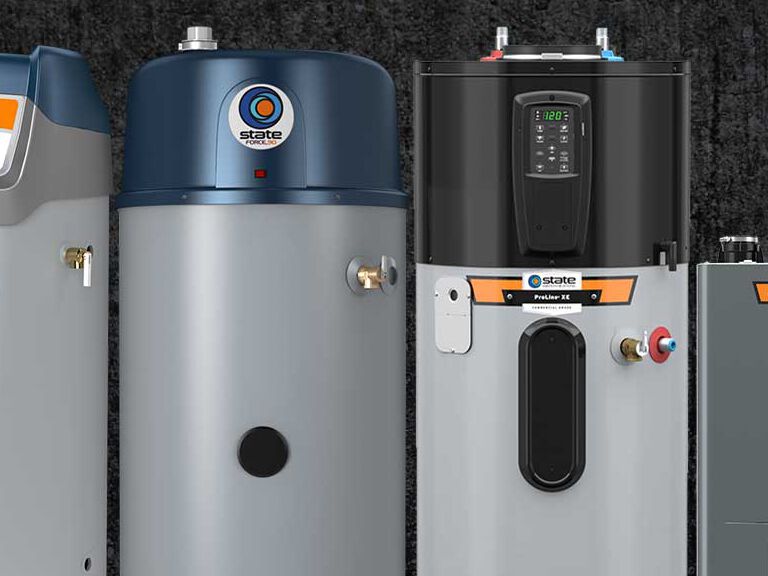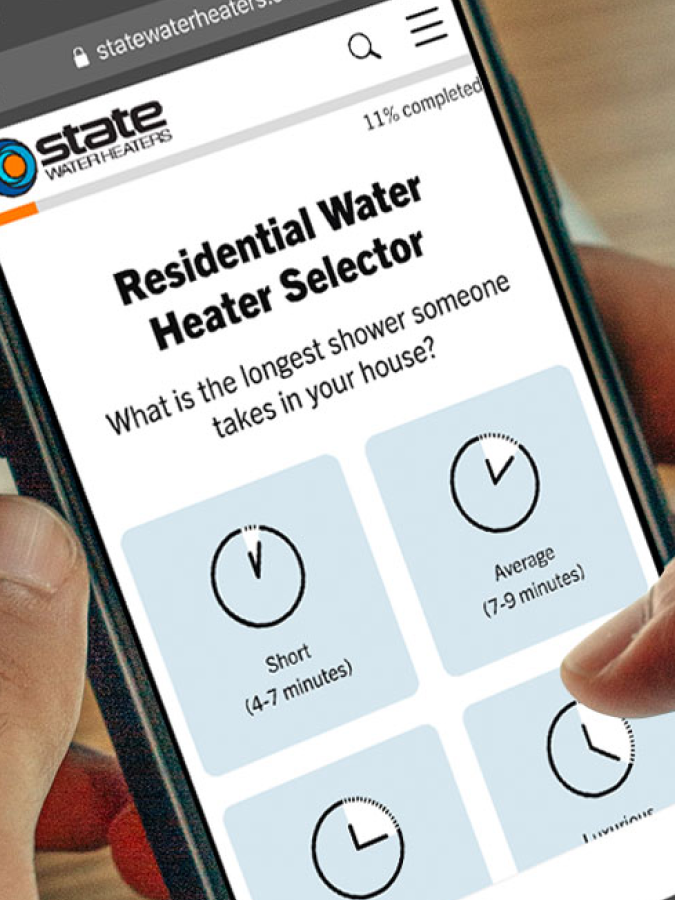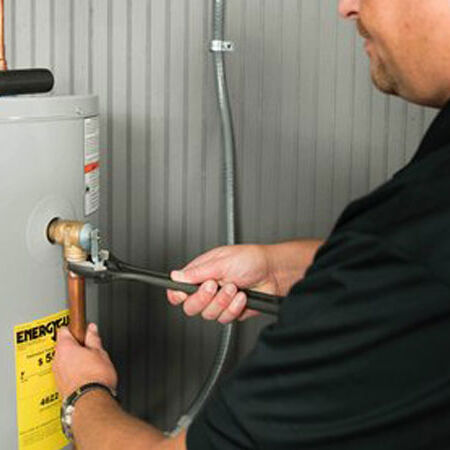
Water Heater Safety
State Water Heaters has provided innovative and safe water heaters for your home for more than 75 years. Through engineering and technology, State’s water heaters are vigorously tested and may have features that can detect problems before they occur.

Tank Water Heater Safety
State’s water heaters are vigorously tested and designed with features that can detect problems before they occur. See below for a list of innovative safety features that State Water Heaters builds into all tank water heaters.
How We Make Your Water Heater Safer
Venting
Properly venting your water heater ensures that the exhaust created during operation is safely directed outside of your home. Various vent configurations are available, each tailored to specific requirements. It's crucial to engage a professional plumbing contractor to assess your home's venting system before installation. They can provide recommendations that best suit your needs and ensure safe and efficient operation.
Glass-Lined Tank
State Water Heaters revolutionized the water heater market more than 75 years ago with the introduction of the glass-lined tank for all tank water heaters. This innovation involves lining the inside of the water heater with glass, which helps retain heat within the tank and shields the steel exterior from corrosion, thus mitigating safety risks associated with rusting.
Anode Rod
All State glass-lined tank water heaters are equipped with an anode rod to safeguard the tank and prolong its lifespan. The anode rod generates a low-resistance electrical current, establishing an electrical circuit within the water heater to control corrosion through cathodic protection. Cathodic protection involves safeguarding a surface from corrosion by rendering it cathodic using a current derived from an anode. This naturally induced voltage arises from the potential difference between various metals (a principle also utilized in batteries). Anode rods play a crucial role in shielding the glass lining and tank of your water heater from the corrosive properties of your incoming water.
Energy Cut Off (ECO)
State Water Heaters incorporates a high-temperature cutoff switch into their water heaters to prevent overheating. Each water heater features a differential temperature range designed to maintain water at your desired temperature. In the unlikely event that the water temperature significantly exceeds this range, the ECO activates to ensure the safety of your home. If you encounter overheating issues with your water heater, we advise consulting a professional plumbing contractor for assistance.
Temperature and Pressure (T&P) Relief Valve
In the rare event that the water temperature significantly exceeds the standard temperature or the pressure rises notably above normal, the T&P (Temperature and Pressure) valve may open to release excess pressure and hot water. During the typical water heating process, water expands, leading to increased pressure inside the tank. We generally recommend using an expansion tank to regulate the pressure within the tank. Without an expansion tank, the expanded water has no outlet, causing pressure to escalate within the system. If you notice a leaking T&P valve, it may indicate an unsafe temperature or pressure situation. In such cases, we advise consulting a professional plumbing contractor for assistance.
FVIR (Flammable Vapor Ignition Resistant)
Do not store or use gasoline or other flammable vapors and liquids in the vicinity of a water heater or any other appliance. Our residential gas water heaters are designed to comply with the ANSI Standard (ANSI Z21.10.1-current edition) regarding the accidental or unintended ignition of flammable vapors, such as those emitted by gasoline.

Not sure which product is right for you?
Take our water heater selector quiz to find the correct water heater for your home.

Get it installed by a Local Pro
State’s water heaters are available through your local plumbing professional.



